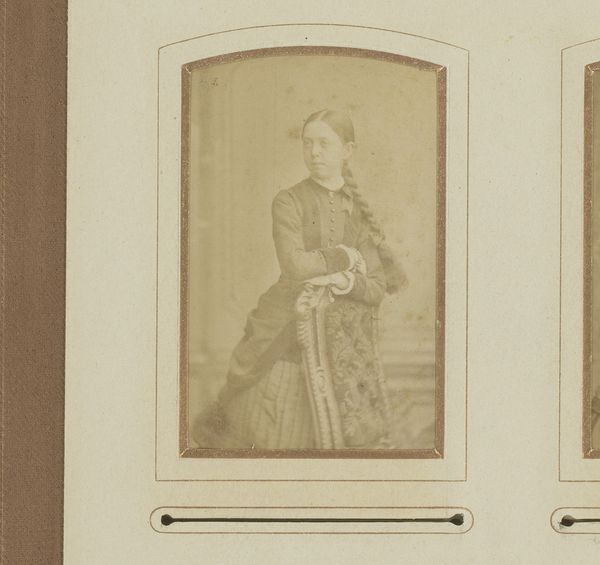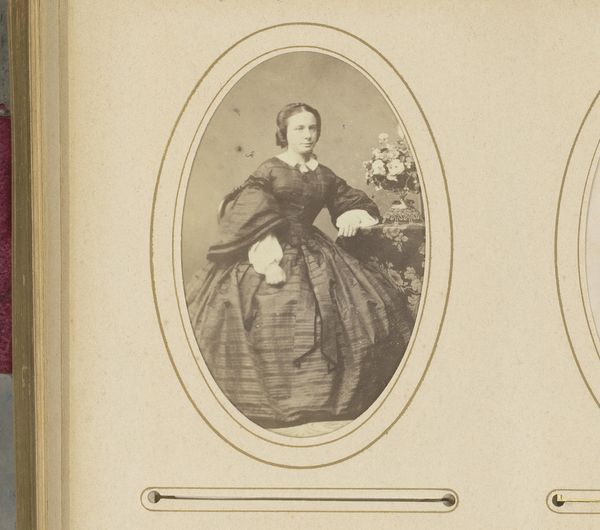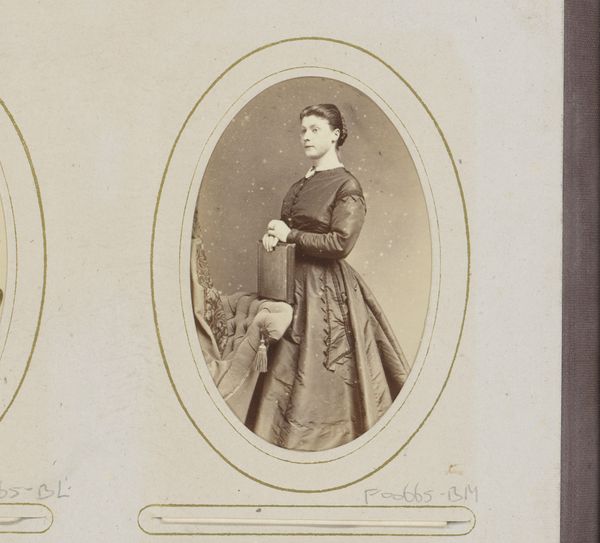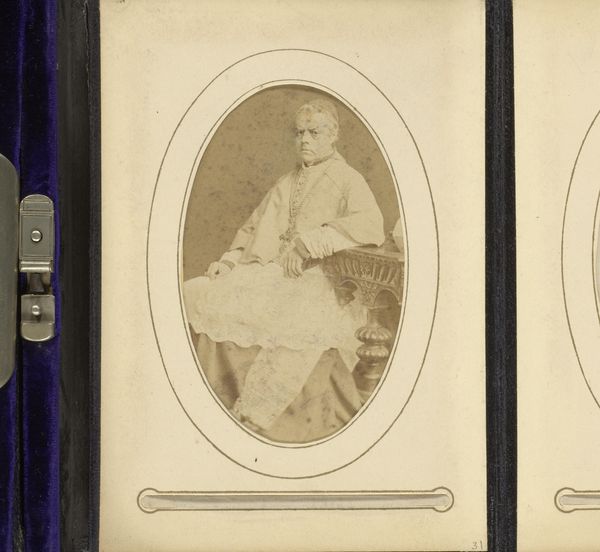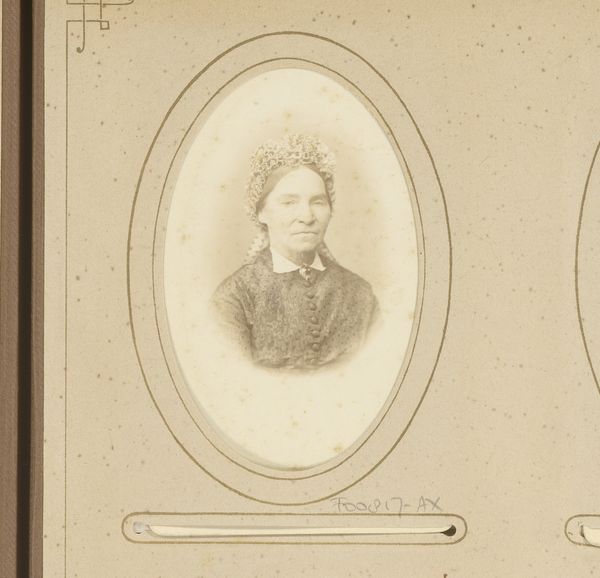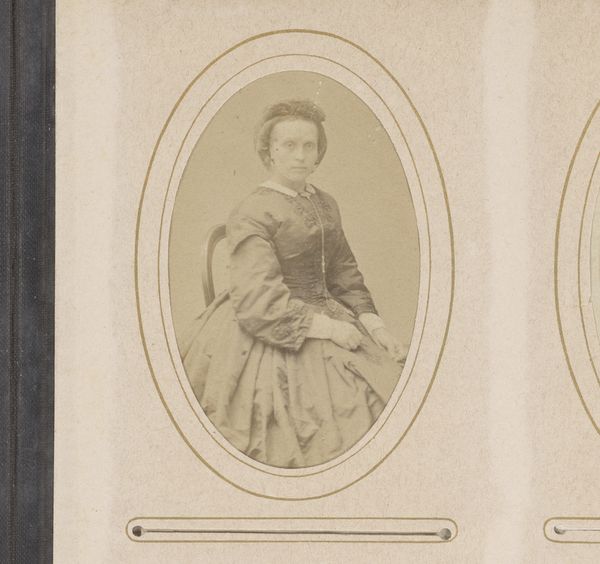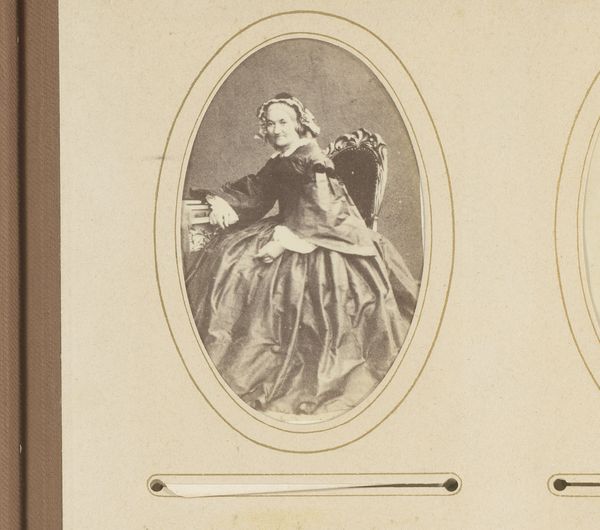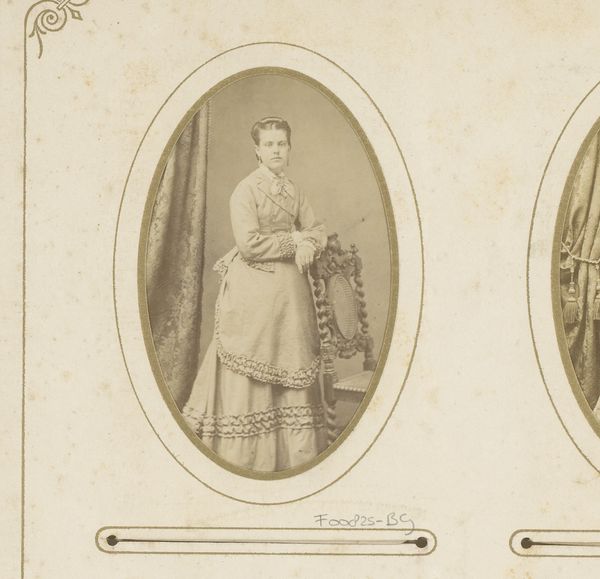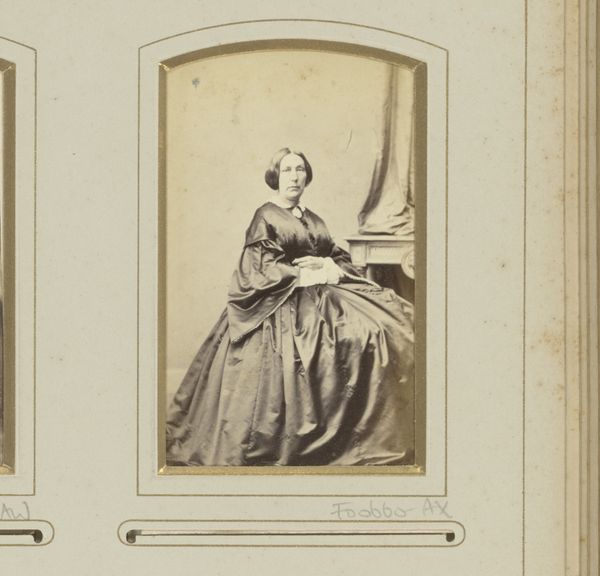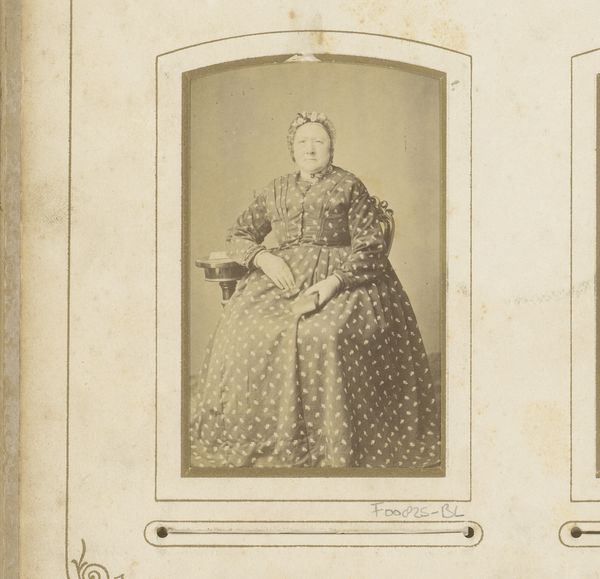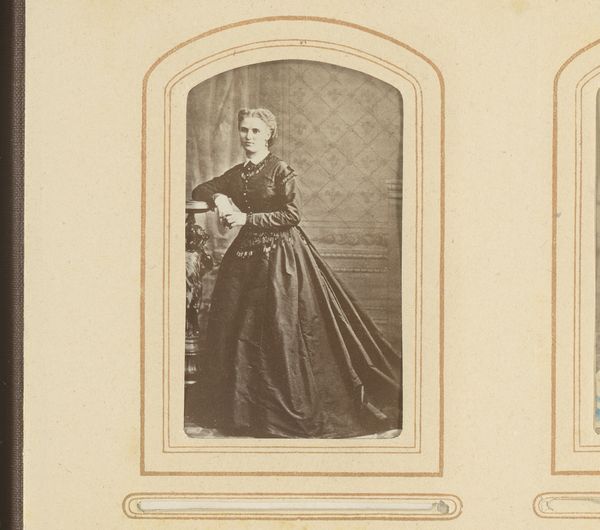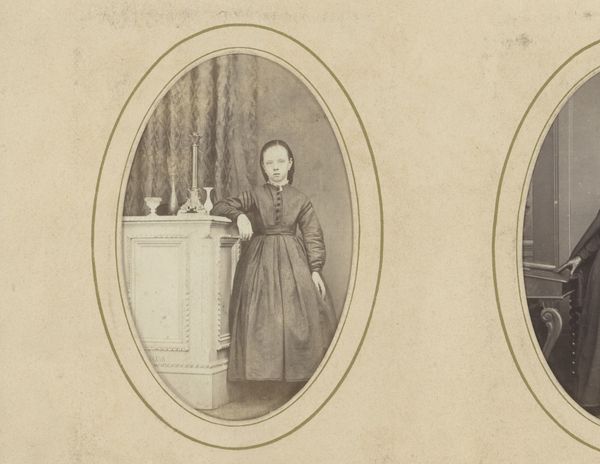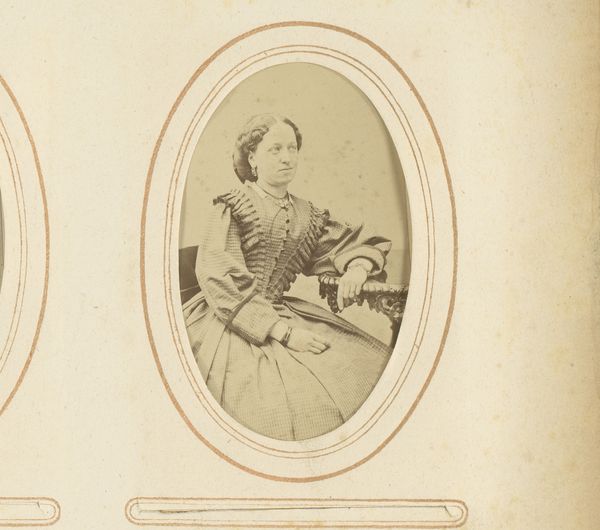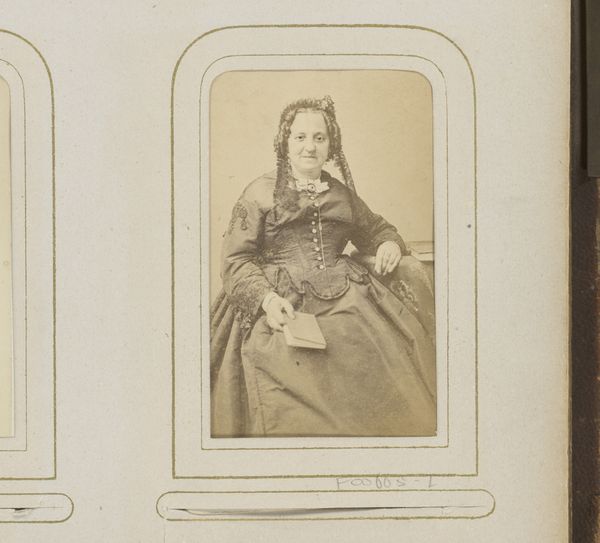
Portret van een zittende vrouw met witte klederdrachtmuts en oorijzers 1870 - 1892
0:00
0:00
photography
#
portrait
#
photography
#
realism
Dimensions: height 87 mm, width 53 mm
Copyright: Rijks Museum: Open Domain
Editor: This is a portrait of a seated woman by Coenraad Cornelis Roskam, probably taken sometime between 1870 and 1892, and the medium is photography. There's something striking in the way she meets your gaze. What do you see in this piece, beyond just a historical record? Curator: I see a preservation of cultural memory, intricately encoded in her clothing. Notice the white klederdrachtmuts and oorijzers; they're not just garments, they are symbols, telling a silent story about her heritage and belonging. The realism captured by photography freezes a moment laden with these signifiers, doesn't it? Editor: It does. So, are you saying the clothing is like a visual language? Curator: Precisely! And think about the psychological weight of wearing such culturally specific items. This clothing, meticulously preserved across generations, creates a strong connection between individual identity and community, shaping perceptions from both within and without. It asks us: how does visual identity impact how we are perceived? Editor: That's fascinating. The portrait then acts as a mirror reflecting not just the woman, but the society around her and its values? Curator: Absolutely. And consider how photographic realism contributes. There’s an implication of objective truth that overlays, perhaps, the performance of identity through dress. The sitter understands she is being represented. Are we seeing authenticity, or carefully constructed presentation? The clothing might be worn daily or could it be an act of performing an established role? Editor: I never thought of it that way, it really gives the portrait a lot more depth to it. It’s not just a photograph, but an insight into how she wanted to be remembered. Curator: Indeed. And how these symbolic threads connect us to the past.
Comments
No comments
Be the first to comment and join the conversation on the ultimate creative platform.
